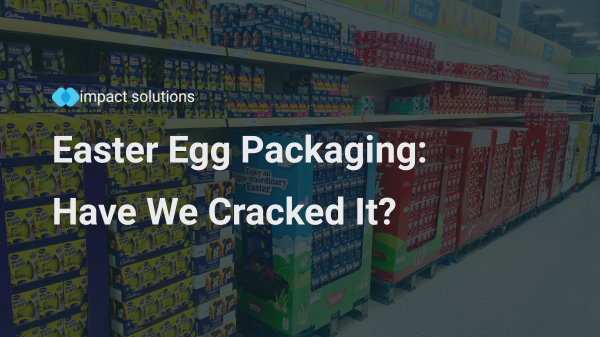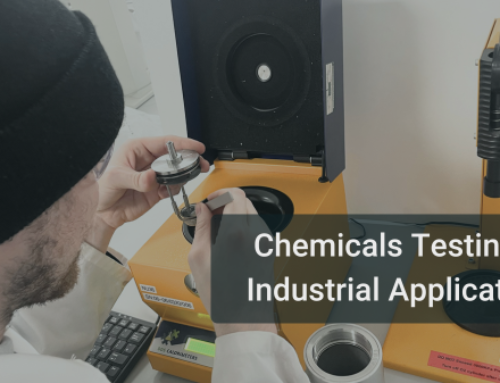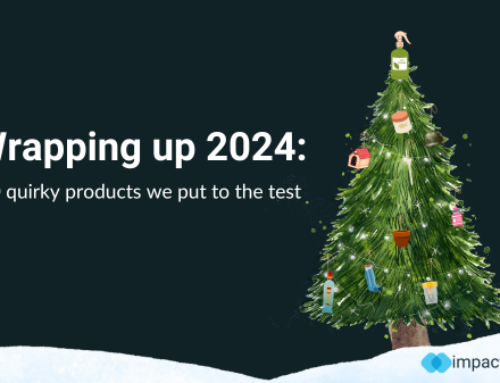There was a time when we wanted to see what was inside packaging and cellophane windows or clear plastic windows provided just that. We wanted to see what was inside those magical chocolate egg boxes, maybe take a wee peek inside to see what extra chocolates came with the egg.
Back in 2018, we released an article on Easter Egg Packaging that highlighted the sheer volume of waste that was produced from easter eggs. After 7 years, and much environmental progression on plastic usage, it’s evident from a quick scan of the easter egg shelves in the supermarkets that a lot less plastic is being used. We’ve flipped a 180 and now require no windows. Is this a good thing? Is more cardboard better? Let’s look into it.
A Quick Recap
Our research and studies like the one by Which?, showed that packaging could account for a significant portion of an Easter egg’s total weight. In some cases, like Thornton’s Classic Large Egg, packaging made up over 36% of the total weight! A large amount of this was plastic. While much of it was recyclable PET 1, the sheer volume was still a concern. As many may argue easter eggs are essential, this volume of plastic waste was not necessary.
The Rise of Paper-Based Packaging
Over the last few years, we’ve been seeing a shift. Many manufacturers have moved towards cardboard and paper-based packaging and removing that clear plastic window in easter egg packaging or the plastic holder to make the egg sit straight. This seems like a win, right? Paper is biodegradable and often readily recyclable. However, it’s not quite that simple.
While paper reduces our reliance on plastics, it introduces its own set of challenges:
- Deforestation: Increased demand for paper can contribute to deforestation if not sourced sustainably. Look for the FSC (Forest Stewardship Council) certification to ensure responsible forestry practices.
- Manufacturing Impact: The production of paper, especially when bleached and heavily processed, can have a significant environmental footprint in terms of water and energy consumption.
- Recycling Limitations: Not all paper is created equal. Some paper packaging may contain coatings or laminates that make it difficult or impossible to recycle. Furthermore, paper can only be recycled a finite number of times before the fibres become too short.
- Food safety and protection: Paper alternatives often require an inner plastic or foil layer to protect the chocolate from moisture.
Is Easter egg Packaging Recyclable?
The good news is that most Easter egg packaging is potentially recyclable. As we highlighted in our previous article, the main culprits for non-recyclability tend to be:
- Plastic Windows: These are often made of a type of plastic that isn’t widely recycled.
- Chocolate Bar Wrappers: These are often made of mixed materials that are difficult to separate.
For consumers, they can make a more informed choice by checking with their local authority regarding what they can and cannot recycle. Recycle Now is also a good resource for information.
What are we doing to support packaging manufacturers?
At Impact Solutions we support packaging manufacturers by ensuring compliance, driving innovation, and enhancing sustainability in packaging design and production. We provide testing and product development services across all lifecycle stages by providing test methods, or research and development.
So, Easter egg packaging: Have we cracked it?
The shift to paper-based packaging is a step in the right direction. But we can do more. The best solution involves a combination of reducing packaging overall, using truly recyclable materials, and investing in better recycling infrastructure that can be used effectively by real customers. Easter egg manufacturers also need to continue to innovate and find sustainable solutions that minimise environmental impact without compromising product quality or safety.
Contact us to find out how we can help solve your packaging challenges!





